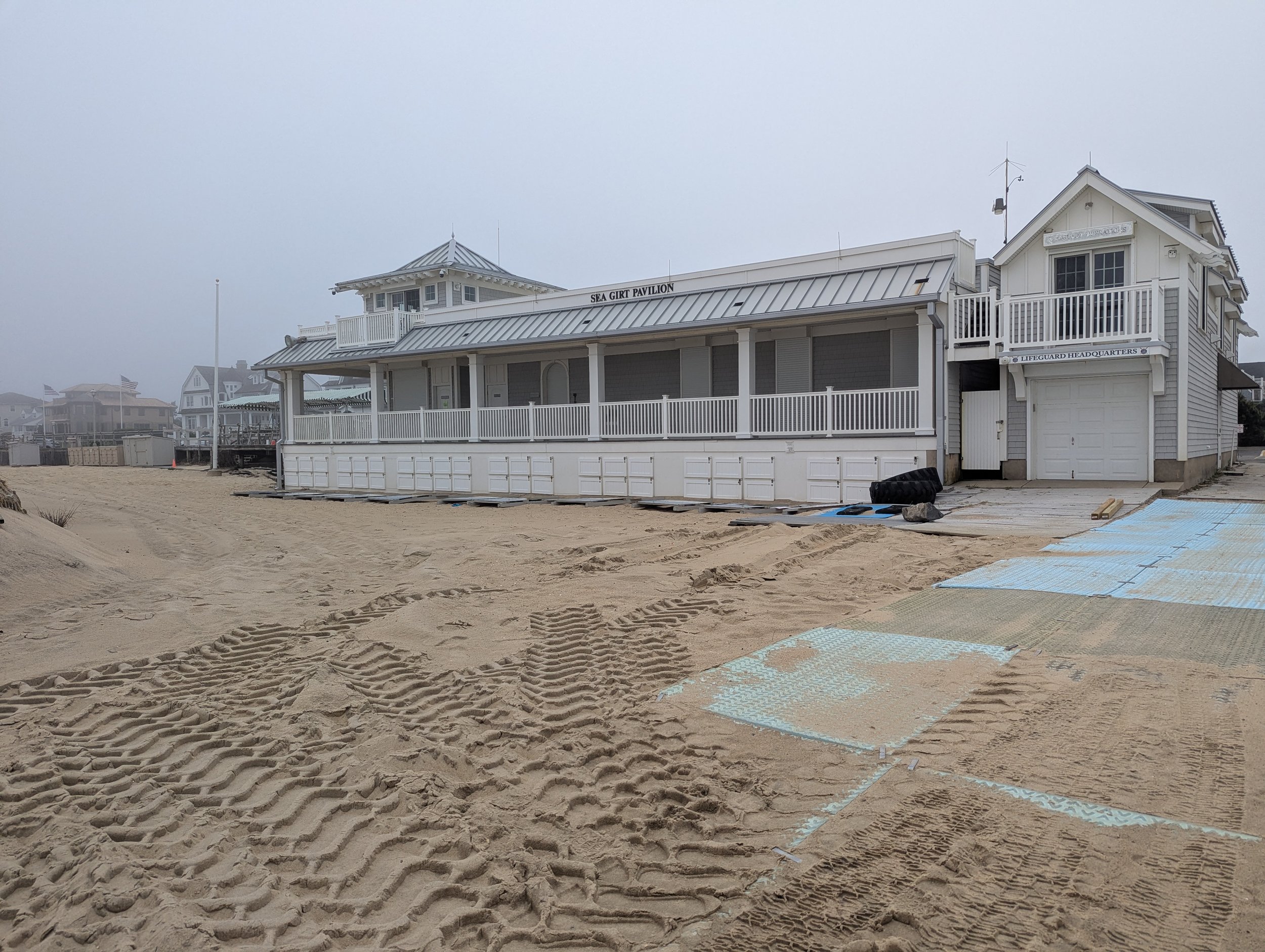Budget heat
Council wrestled with three construction projects in 2005. Mayor Ahearn listened to the citizens regarding overspending. He prided himself on reigning in those who wanted the spend to match the higher home values and the rising wealth of the residents.
The Pavilion from the water
The plans for the Pavilion took longer than expected. The borough took significant public input for the new two-story 3,800 square foot structure. It was nowhere near as elaborate as the 1920s block-long building, but it was a significant improvement over the tiny 35-year-old ‘temporary’ structure which was hastily constructed when the original fell onto the beach in the early 1960s.
The new pavilion included a lifeguard headquarters for the first time
Bids were rejected after estimates came in at between $1.400,000 and $775,000. The economics suggested seasonal locker rentals and concessions would offset the capital costs. Some of the bids were deficient. When construction actually started, and the project dragged into 2006, there was consternation.
Construction at the shore tends to go something like this “Slow, snow, slow, better get busy, its spring, omg its April and Memorial Day is six weeks away!, We’re not gonna make it!”
Ray Bogan, Councilman in charge of the Beach Committee, recommended that the Council change contractors in the second week of April 2006, with very little work done. They gave the contract to Poss Construction, which was located in town. Owner Bill Pospisil of Manasquan worked 59 straight days to deliver the $1.1 million building before the 4th of July.
Locker storage and concessions helped to cover the capital costs
The Americans with Disabilities Act created another problem. Passed in 1990, aggressive enforcement and lawsuits became the norm after 2000. Initially, existing buildings were not subject to extensive reconfiguration. But after the DOJ began more aggressive interpretations, owners of public spaces were put on notice. A sharp rise in shakedown lawsuits forces most public entities to reassess. Reasonable accommodation came to mean that buildings without full access for handicapped individuals were at litigation risk.
Sea Girt’s 90-year-old borough hall was insufficient. Meetings had been moved to the elementary school to allow public access, but most other departments needed more changes. Mayor Ahearn kicked off a campaign to determine if there was an appetite for a new borough hall or if the town just needed to invest in modifications. The mayor had seen this issue trip up other mayors in the long history of Sea Girt, and left councilman Marc Clemmenson to measure the public mood to set the spend. They opted to make modifications to the old building.
The old building got a ramp and other accessibility features.
The last project of 2005 was platform tennis courts. There was a move in 2004 to add the courts, a narrowly played sport, but one that was played in the months when tennis was less active on a heated platform. Two locations were debated: Bell Place, next to the existing courts, or Crescent Park. Many trees would have been felled on Bell Place.
The first and still only platform tennis court in town
Fewer residents complained about the Crescent Park location, so that site was chosen. Residents supportive of the initiative pledged to put up $25,000 to offset the $55,000 installation price. The tennis courts were resurfaced at the same time.
J.P. Connellan, a former councilman, pledged $5,000 toward the first court. A second court could come on line in a year if there was demand and the cost was totally funded by donations. The second court, although approved, has been the source of much discussion and debate over the last 20 years. It still has not been built.
Many people did not want to see the park touched.






